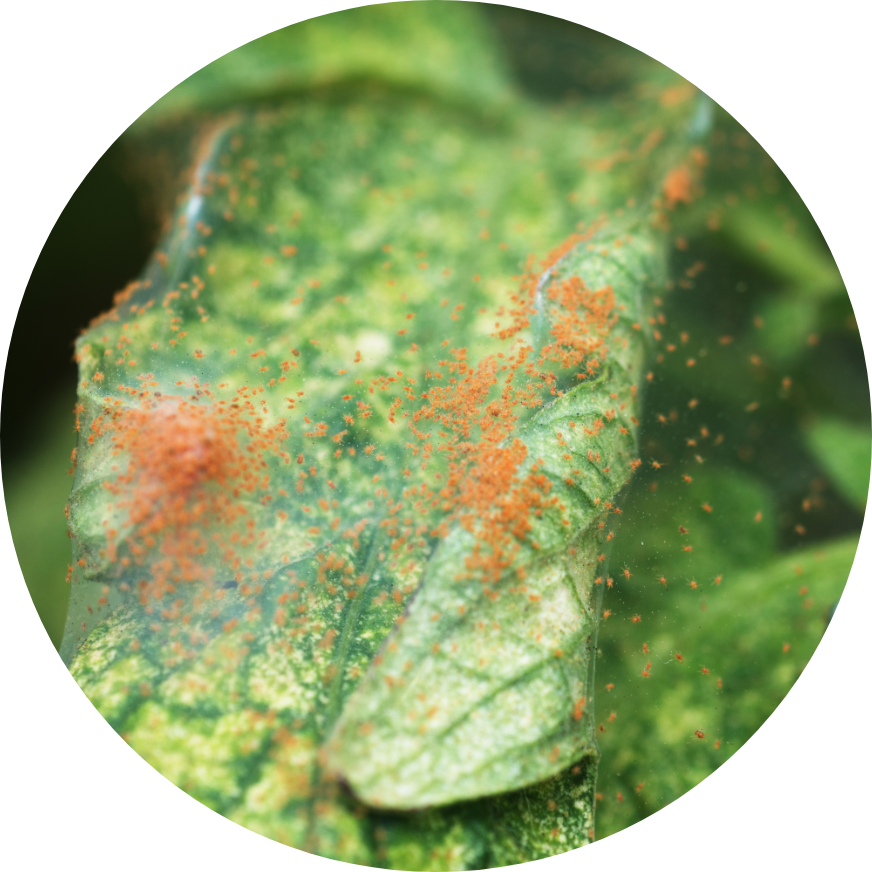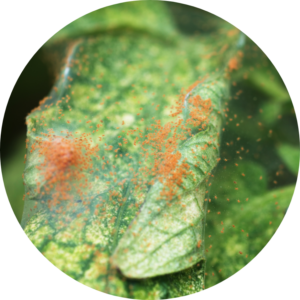Spider Mite

Spider mites are a variety of arachnid, made up of over 1,200 different species, which are commonly occurring pests in landscapes and gardens. Less than one millimeter in size, they often live on the underside of a tree’s leaves where they spin the webs that both give them protection and provide them with their name. These mites employ mouth-parts that pierce the leaves and provide them with nourishment, damaging the plant cells in the process.
The greatest period of mite activity is from June through September, and hot weather conditions are ideal for their reproduction. Because of their small size, the presence of spider mites can be hard to detect; the results of their feeding will most likely be noticed first, in the yellow or red stippling that develops on leaves they’ve infected. Discoloration, flecking, and leaf scorching are the most common symptoms of a spider mite infestation.
One option for controlling spider mite populations is the use of a miticide, including plant-based options like neem, cottonseed, or canola oil, or petroleum-based horticultural oils and insecticidal soap. Extensive coverage of mite-infested areas with these substances is critical in regards to their effectiveness. Be careful when considering the use of certain insecticides (such as carbaryl), as they can actually kill some of the spider mite’s natural predators (including lady beetles, minute pirate bugs, and predatory thrips), allowing the pest to flourish. On smaller trees, even the use of a garden hose with a powerful spray can help get rid of an infestation.

